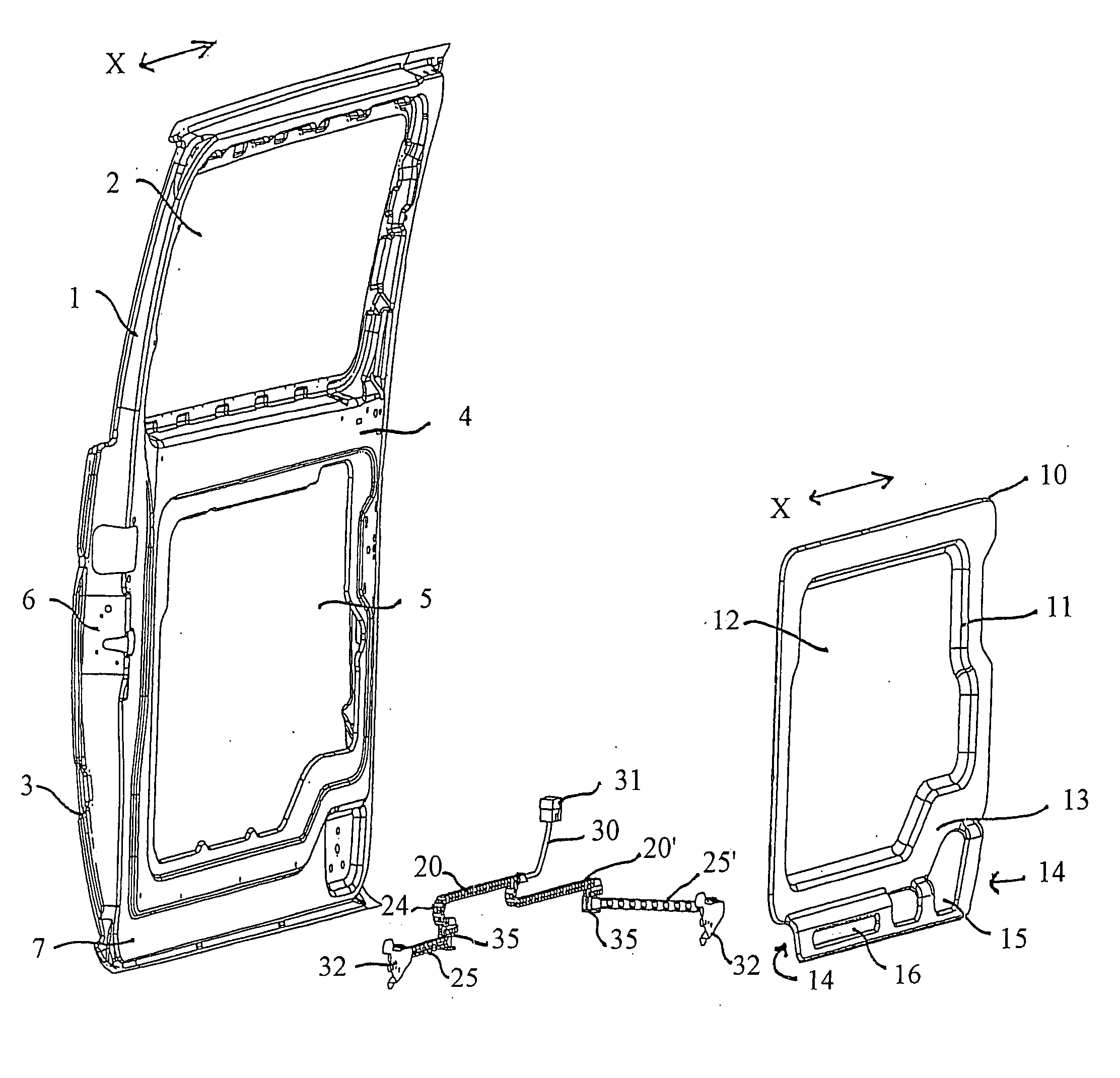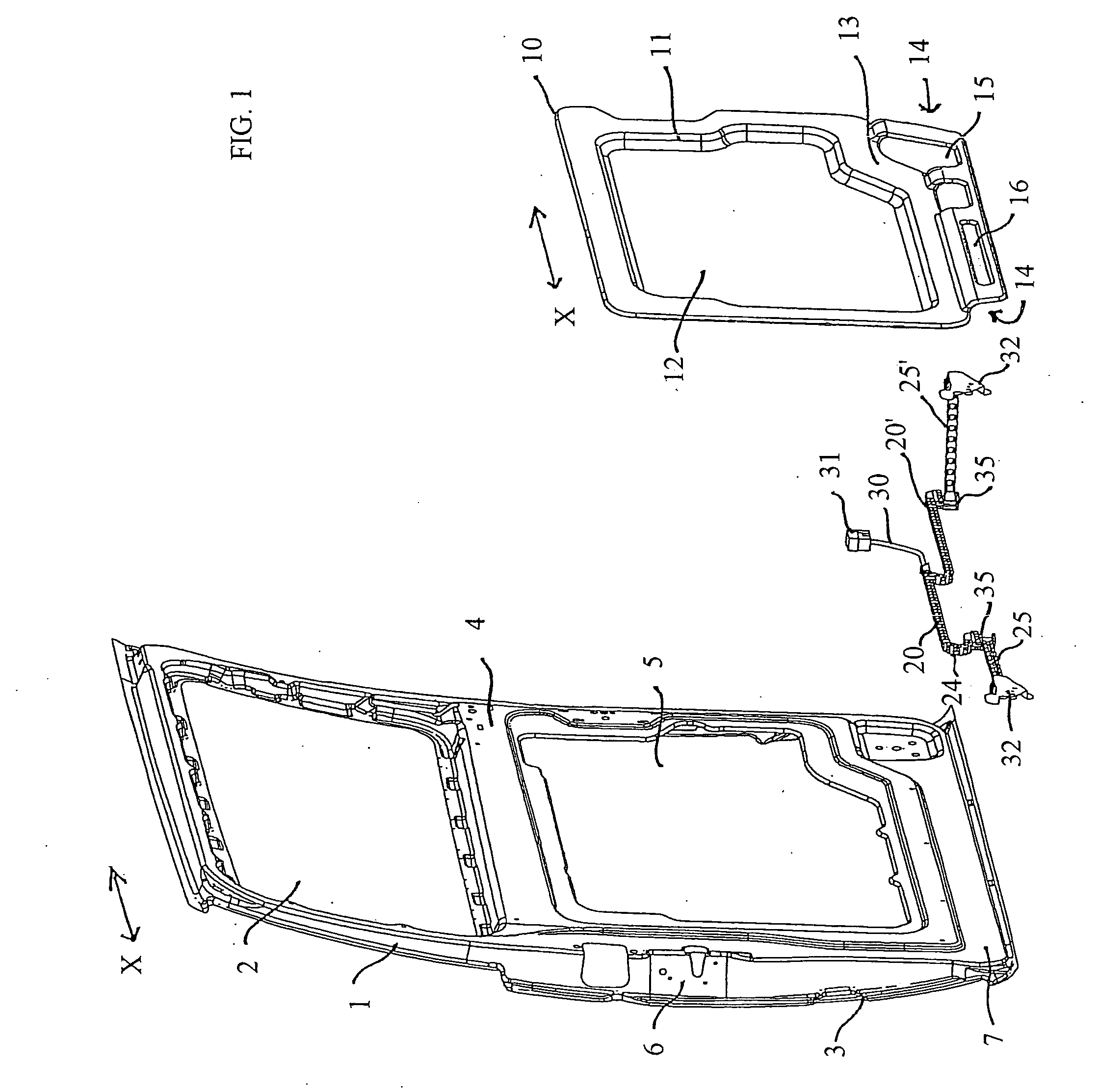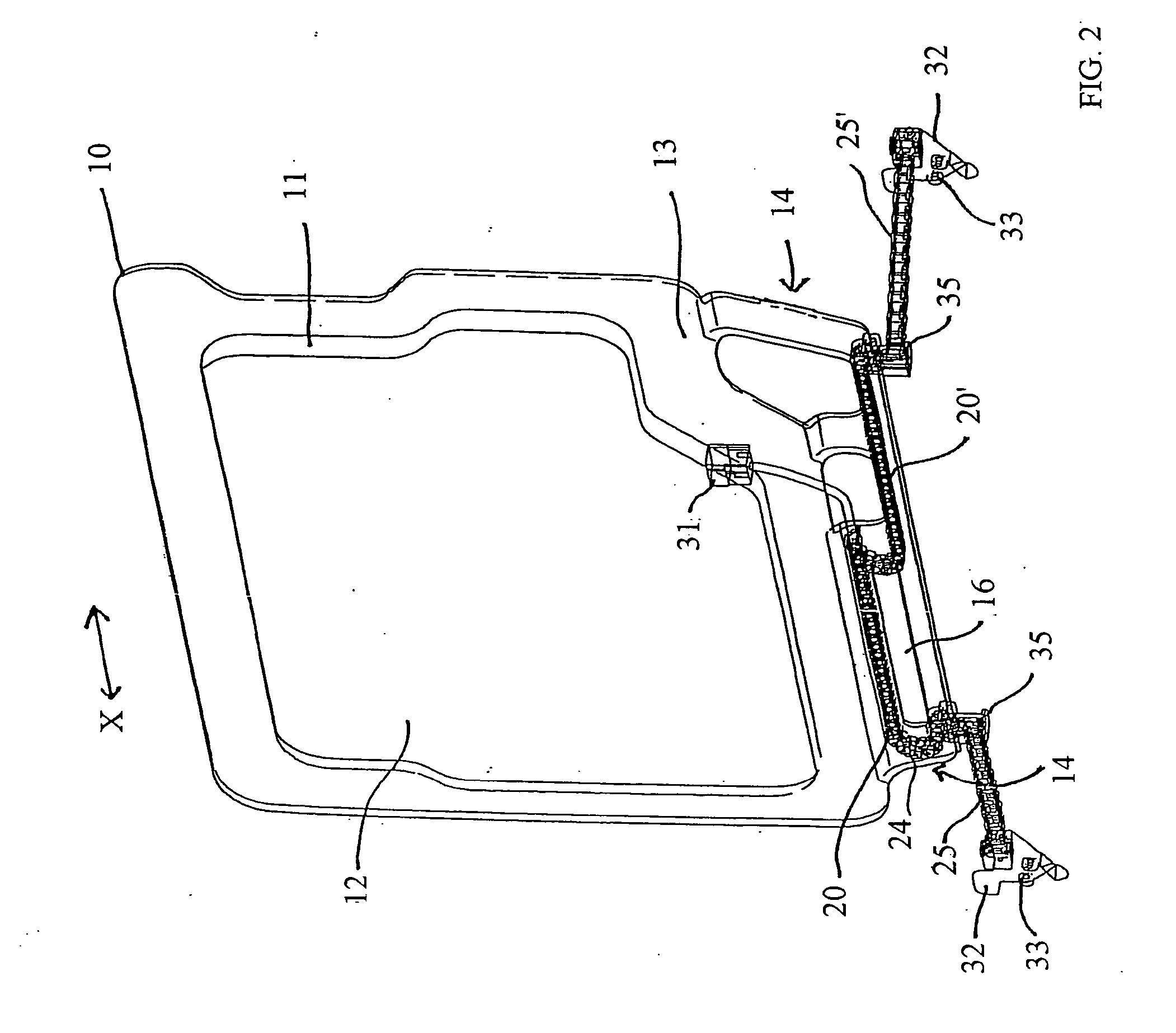Sliding door for motor vehicles and method for the assembly thereof
a technology for sliding doors and motor vehicles, applied in the direction of doors, roofs, wing accessories, etc., can solve the problems of difficult sliding movement, no independent common points, and relatively complex power supply of sliding doors, and achieve the effect of simple and cost-effective power supply and flexible us
- Summary
- Abstract
- Description
- Claims
- Application Information
AI Technical Summary
Benefits of technology
Problems solved by technology
Method used
Image
Examples
Embodiment Construction
[0031] The left-hand part of FIG. 1 shows sliding door 1 that is formed by an outer door skin 3, which has a convex outward curve, and an inner door skin 4 and has a window aperture 2. The direction of movement extending parallel to the longitudinal direction of the vehicle is designated in the following by the double arrow x. On the rear face end of sliding door 1 is provided a door lock assembly 6. Inner door skin 4 forms a circumferential border which encloses a cavity 5 in sliding door 1, for example for lowering the window or for accommodating components. Sliding door 1 is supported in the known manner by means of articulated joints on guide rails which extend along the top and bottom edge of the vehicle's door aperture (not shown).
[0032] The right-hand part of FIG. 1 shows a plate-shaped door module support 10 which serves to accommodate a plurality of the sliding door's functional units. These functional units may be pre-assembled on door module support 10 prior to its insta...
PUM
 Login to View More
Login to View More Abstract
Description
Claims
Application Information
 Login to View More
Login to View More - R&D
- Intellectual Property
- Life Sciences
- Materials
- Tech Scout
- Unparalleled Data Quality
- Higher Quality Content
- 60% Fewer Hallucinations
Browse by: Latest US Patents, China's latest patents, Technical Efficacy Thesaurus, Application Domain, Technology Topic, Popular Technical Reports.
© 2025 PatSnap. All rights reserved.Legal|Privacy policy|Modern Slavery Act Transparency Statement|Sitemap|About US| Contact US: help@patsnap.com



